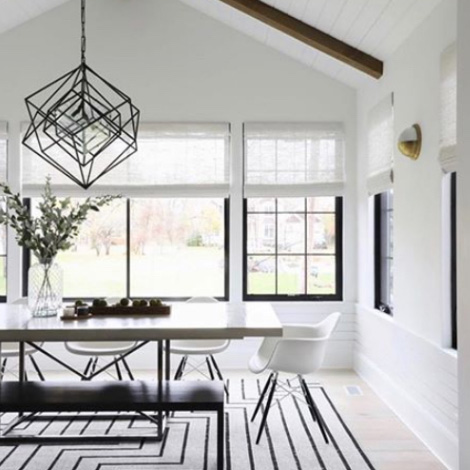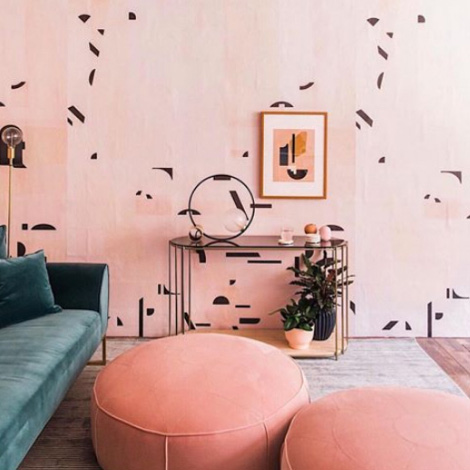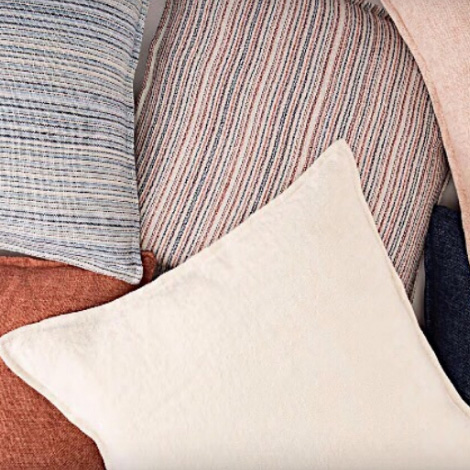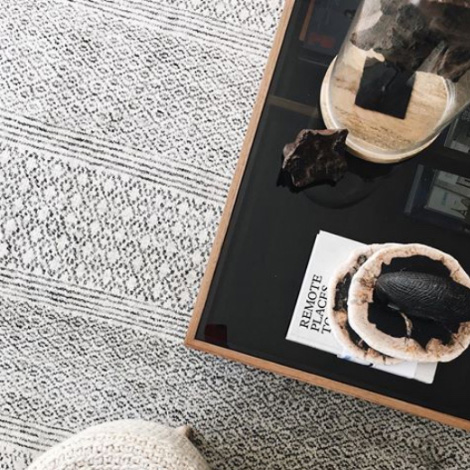When you hear “unconventional materials,” it’s hard not to picture a group of frantic fashion designers digging through heaps of garbage and praying for inspiration to strike—think the infamous challenge on Project Runway. The winning looks on these fan-favorite episodes were always eye-catching and imaginative, transforming hard-to-manipulate items into stunning works of wearable art.
Similarly, when unconventional materials are used in home decor—elements such as rugs, poufs, pillows and throws—they can elevate a space in ways that are surprising, chic, and often sustainable. Here, interior experts Leah Hook of Gray Oak Studio, Sandie Mazzi of S. Mazzi Interiors, and Jacy Painter Kelly of Jacy Painter Kelly Interiors share four fresh ideas for incorporating unique and innovative constructions into interior design.
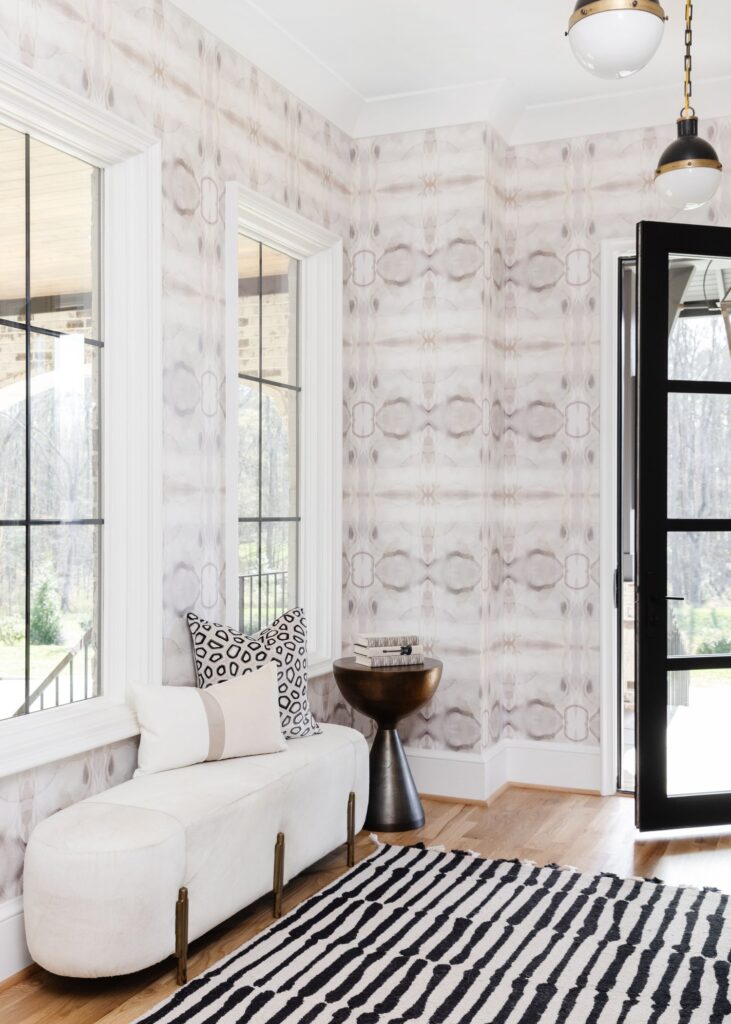
Made from hand-tufted wool, this rug from the Vera collection by Nikki Chu for Jaipur Living makes a bold statement when paired with a hair-on-hide bench and velvet pillows in a space designed by Jacy Painter Kelly Interiors. Photo by Laura Sumrak
All in the Details
“Unconventional materials have a story,” says Hook, co-founder and principal designer of Gray Oak Studio. “And so much of creating a welcoming, beautiful space is telling a story—of the family, the home (the actual building), and the location in the world.” A good story relies on the details to make it interesting, so incorporating unique materials—even in small or intricate ways—is essential. “We all want our homes to feel special,” she says.
See also: 8 Questions On The Truth About Textiles
Unconventional materials don’t have to dominate a space; rather, they should be used thoughtfully to make a statement. “I’m seeing more play with different construction techniques in one rug or pillow—different pile heights, embroidered patterns or details, fringes, or tassels,” says Mazzi, principal designer of S. Mazzi Interiors. Meanwhile, Jacy Painter Kelly, the principal designer of her eponymous firm, notes that a small pop of color from dyed materials can pack a big visual punch. “I’ve used a lot of the poufs from Jaipur Living in kids’ spaces,” she says, referring to the Saba collection, which features braided jute poufs and pillows in a variety of colorways like rosy beige and cobalt blue—perfect for a playroom or a nursery. “I like the dyed natural fibers in fun colors.”
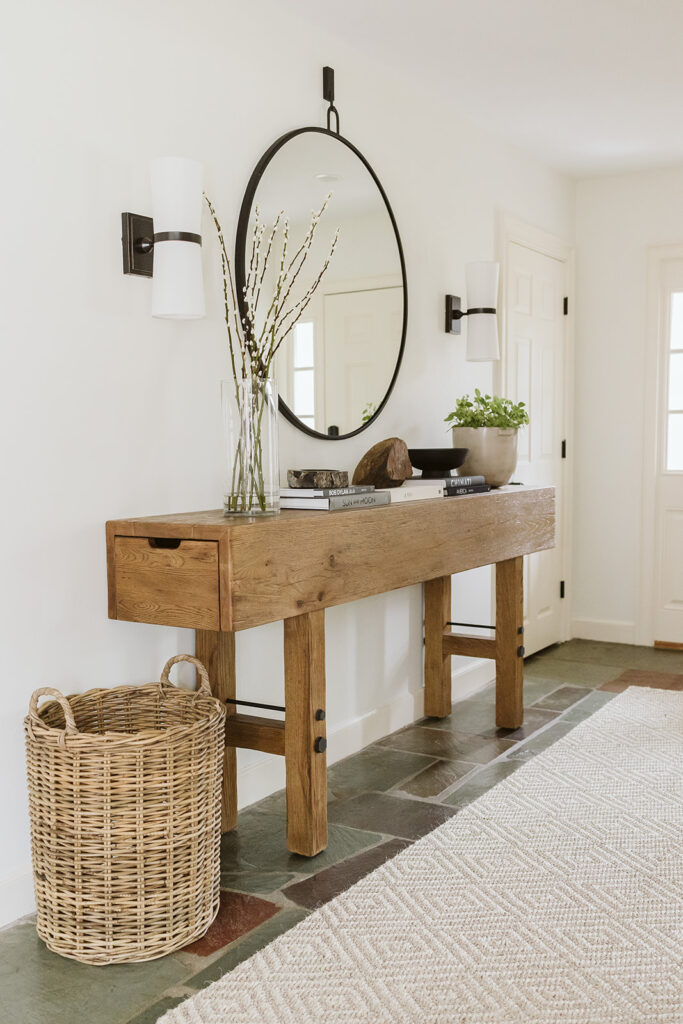
Gray Oak Studio styles Jaipur Living’s Naturals Tobago rug in an entryway. Photo by Autumn Aguiar
One Sisal Fits All
Although plant fibers have been in fashion for years as an eco-friendly textile alternative, some natural materials such as sisal have yet to take their turn in the spotlight—until now, that is. “In general, we love sourcing materials that are naturally derived and long-lasting,” says Hook. “Jute has been a mainstream material for a long time, but we’re very happy to see sisal rising in popularity.” For many interior designers, sisal rugs are considered a design staple for their beautiful texture, neutral aesthetic, and low-maintenance functionality. “People often think that sisal and jute are the same because they look similar and are both plant fibers,” she continues. “But sisal is a stronger, more durable material, and more easily cleaned as a result. It’s also a sustainable material. A feel-good product all around.”
See also: 11 Questions On The Future Of Socially Conscious Design
For a recent project, Gray Oak Studio used a Jaipur Living Naturals Tobago sisal rug in the entryway and found that it created the perfect foundation for the high-traffic area. “It brought natural colors, organic texture from the sisal fibers, designed texture from the woven pattern, and true functionality for our clients, who have three kids and two big dogs,” Hook notes. “We were able to have it custom sized, which was important because the space was not a standard size,” she adds.

Interior designer Kate Lester‘s Harman and Harman Natural collections with Jaipur Living are a match made in layering heaven.
Neutral Territory
Textiles are tangible experiences, and thinking beyond traditional fabrics helps ensure that neutral areas have a wow factor. “They bring the unexpected element and dimension that helps a space read more ‘finished,’” Kelly says of unconventional materials. “Use them instead of a bolder item—layer them in with neutrals instead of feeling pressed for a ‘bold pop’ or too much color.” Mazzi agrees. “I recently had a project that was all about neutrals, so we brought in lots of texture through the textiles—fringes, embroidered fabrics, etc.,” she says.
See also: 5 Tips For Perfectly Layered Interiors
In general, to keep a neutral space from feeling flat, it needs the juxtaposition of materials to add depth and create visual interest. “We are mixing a lot of textures (wool, leathers, velvets) together in neutral tones to make a bolder statement,” explains Kelly. She adds that rugged hair-on-hide pieces have made a comeback, but with a luxe, modern spin. “Hair-on-hide (cowhides and patchwork) is still very relevant, and I’m using it a lot in solids lately—mostly whites, creams and grays.” The designer recently sourced a striking black-and-white hand-tufted wool rug with boho-chic tassels from the Vera collection by Nikki Chu for Jaipur Living to pair with a neutral hair-on-hide bench and velvet pillows—the ultimate unconventional mix.

Interior designer Sandie Mazzi calls out the Drezden collection as one of her favorites from Jaipur Living.
Recycle Right
Much like the “trashion” featured on Project Runway, finding creative ways to give old materials new life not only adds interest, but is good for the environment too. “We are very interested in rugs and textiles made of recycled PET fabric,” says Hook, while Mazzi adds that she’s seeing more and more rugs incorporating recycled denim. “I think we’re going to see more recycled materials being used in textiles as we become more eco-conscious,” Mazzi observes.
See also: The Guide: Sustainable Materials
The materials that craft everyday home accents like rugs and pillows will only grow more innovative as sustainability becomes not only a trend, but an imperative. From recycled plastic bottles (as used in Jaipur Living’s Drezden collection) to recycled sari silk—which gives the best-selling Tamil rug its worldly, one-of-a-kind charm—it is clear that reusable items are the fabric of the future. “We all have to find more ways to use recycled materials in our day-to-day lives,” Hook urges. “We love that the rug and textile industry is leaning into the earth-friendly movement.”


